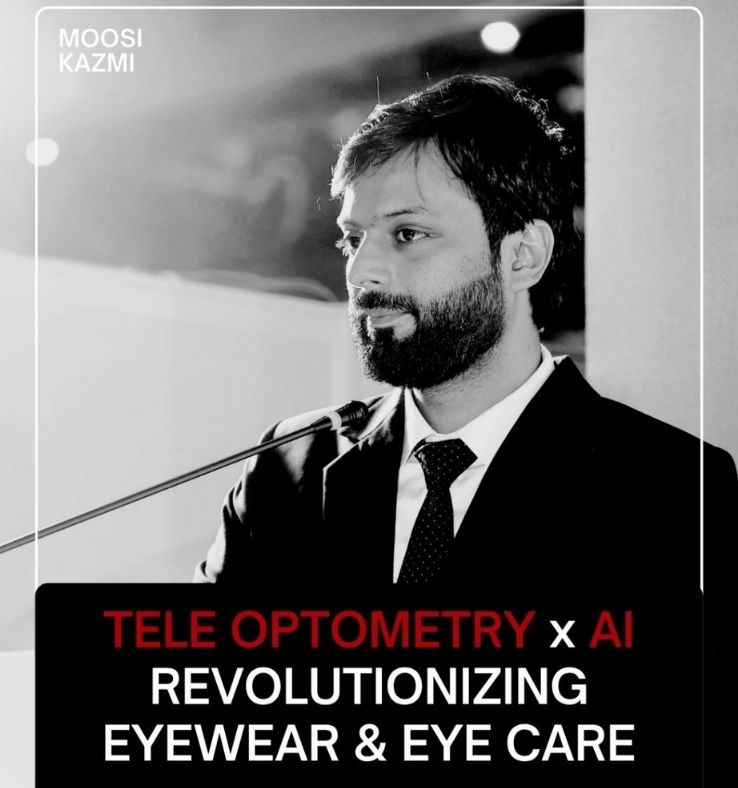Solutions For Patients With Nystagmus
_(1).jpg)
Last December LI was invited to present one of three FREE interactive CET webinars for Optometrists and Dispensing Opticians hosted by the Nystagmus Network charity based in the UK.
" What is Nystagmus "
Nystagmus is a form of visual impairment, characterised by wobbling or flickering of the eyes, from side to side, up and down or round and round. This affects the ability to focus, judge speed and depth and recognise faces.:
The Nystagmus Network is a registered charity in England and Wales.
I presented a session on "Solutions for patients with Nystagmus"exploring dispensing spectacles and contact lenses for patients with infantile and acquired nystagmus.
The solutions touched upon surgery, prisms, spectacles , contact lenses, low vision aids , referrals to an ECLO : eye clinic liason officer , a rehabilitation team to help with daily living skills and mobility training and genetic counselling as nystagmus has a genetic component and often can be accompanied by a number of other conditions like *albinism and **acromatropsia to give two examples.
*Albinism is the name given to a group of inherited conditions where there is a lack of pigment ( colour) in the eyes and usually in the skin and hair
** Acromatropsia is where the person has a complete lack of colour vision so may see the world in black and white or have incomplete acromatropsia where not all of the cone cells responsible for colour are affected.
 |
I highlighted contact lenses in this session as they are not generally thought about for patients with low vision but can be useful because often these patients may have high refractive errors and high astigmatism resulting in thick lenses which can be uncomfortable and unsightly to wear.
With contact lenses the comfort may be improved and the freedom to do more activities like sports is a boon plus the increase in self esteem and self confidence may well be worth the effort for patient and practioner.
There are theraputic uses also such as sentivity to light and glare as often seen in nystagmus and during my research for this webinar I found a contact lens manufacturer that offers prosthetic coloured contact lenses that could benefit patients by reducing the glare, and possibly offer improved comfort and vision and improved cosmetic on a light coloured iris.
The other two sessions were
"Investigating and Managing nystagmus in the Orthoptic Clinic " was delivered by Gemma Arblaster, Orthoptist at Sheffield Teaching Hospitals NHS Foundation Trust and Lecturer in Orthoptics at the University of Sheffield.
The charity’s Information and Development Manager, Sue Ricketts, presented her webinar "1 in 1,000 things you never knew about Nystagmus", looking at nystagmus from the patient perspective and explaining how patients can best be accommodated in practice.
Around 200 practitioners attended each webinar over the course of three evenings.
I would like to thank Sue Ricketts and the Nystagmus Network for their following their ambitious aim to bring eye care practitioners and their practices and the nystagmus community closer together, to build stronger relationships, based on knowledge, experience and trust.

.jpg)

.jpg)
.jpg)
.jpg)


1.jpg)



.jpg)
.jpg)



_(Instagram_Post).jpg)
.jpg)
_(1080_x_1080_px).jpg)


with_UP_Cabinet_Minister_Sh_Nand_Gopal_Gupta_at_OpticsFair_demonstrating_Refraction.jpg)
with_UP_Cabinet_Minister_Sh_Nand_Gopal_Gupta_at_OpticsFair_demonstrating_Refraction_(1).jpg)

.jpg)








.jpg)



.png)




